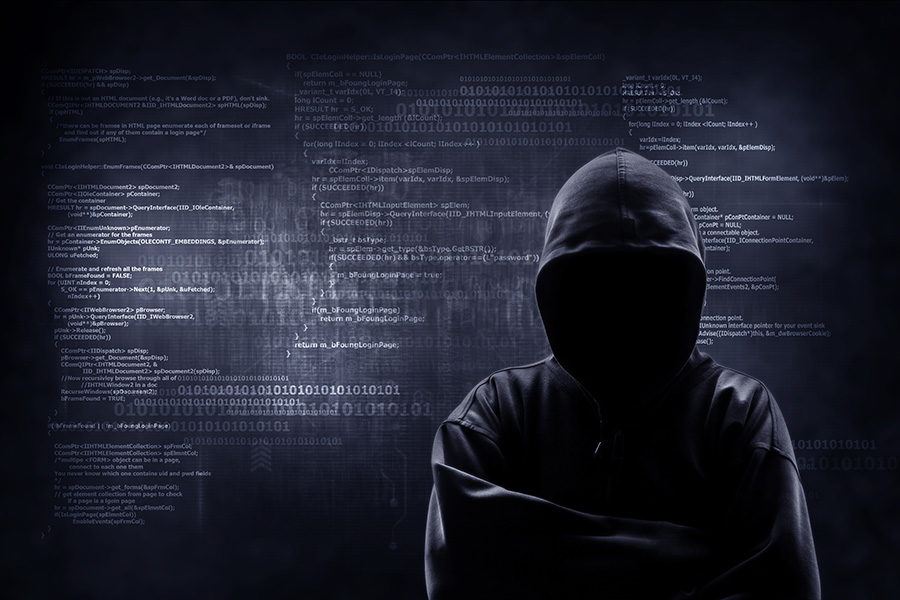Introduction to Dark Web: Analysis On Whether The Dark Web Can Help Catch Criminals.
 by Chawisa Staman
by Chawisa Staman
On a day-to-day basis, we navigate our lives by surfing any number of inquiries on internet websites. Whether for entertainment, knowledge, or socializing, the internet platform is a vast sea of resources that help fuel our passions and desires. It may come as a surprise that this platform that we commonly use, known as the “surface web,” merely comprises 5% of the Cyber World.
In reality, there are three internet platforms, and each platform serves different purposes and has different levels of privacy. These three platforms are the surface web, deep web, and the dark web. Many tend to use the figure of an iceberg to provide a metaphorical explanation of what the Cyber World looks like:
Surface Web: The surface web is seen as the surface of the iceberg, where all communications are exposed, and anyone can access the information as long as they have the username/password or the URL.
Deep Web: As we dive down below the water level of this proverbial iceberg, we find ourselves in the deep and dark web communities. These communities comprise 95% of the Cyber World. The deep web contains information like medical records, confidential corporation webpages, and many other websites that are behind a paywall or require sign-in credentials. Many deep web-websites cannot be detected by the ‘crawlers’ or indexed by the search engines. Google is an example of a search engine, and it requires a login page in order to direct you to another page. Deep web does not require a login page because it is a database-driven website.
Dark Web: Hidden beneath the Deep Web is what’s called the “Dark Web.” Once again, applying the iceberg metaphor to the layers of webs, the dark web is essentially at the bottom of the iceberg. In this realm, many criminals’ activities, such as sex trafficking, drug dealings, illegal weapon buying, and other illicit contents are being conducted.
According to Eric Olson, Vice President of Intelligence Operations at Looking Glass Cyber Solution, the dark web is essentially any internet website that requires special access. There are various platforms of special accessibility programs that encrypt a user’s identity and location, such as Tor, I2P, Zeronet, and Freenet. Programs like these allow users to surf the internet without being monitored or even detected by the user’s own Virtual Private Network (VPN).
In keeping with its nefarious name, anonymity is critical in Dark Web use. Through an encrypted access program, a user can reach and navigate the Dark Web anonymously. In the Dark Web, content censorship is primarily limitless and users’ identities are kept anonymous. Because the encrypted technology used in the Dark Web routes user data through many servers across the globe, it is extremely difficult to track down users.
Whether the Dark Web users are criminals or are those who simply want to explore content with unlimited censorships, it’s common practice to use a VPN or Tails prior to entering and accessing the Dark Web to prevent personal information from being exposed.
CISO should pay attention, according to Olson, “If a user at a corporate network just goes and starts leaving footprints all over the dark web, the denizens of that environment are the highly technical folks who know what they’re looking at and are more likely to get value out of those visitors and the networks they’re coming from than the other way around.”
Cyber Security System
The action of catching a Dark Web criminal is almost like fishing in a deep sea where prey is lured in with bait before being caught. In the Dark Web, “detectors” utilize valuable information to attract criminals, luring them into the Cyber Security System, before eventually catching them. Unfortunately, the Dark Web platform’s expansive size makes it extremely difficult to hone in on a user’s location and identity. All hope is not lost, and today’s Cyber Security Systems often utilize a web-robot, or smart robot technology, to scan for threats and other information pertaining to their organization. The system provides people with real time assessment and the monitoring of cyberthreats across various cyber-crime zones, as well as infiltrating the criminal networks to provide early warning.
Many organizations have subscribed to the Cyber Threat Intelligence System, where the system employs a smart robot to conduct thorough scanning over the Dark Web to ensure that none of the organizations’ information is being compromised. Each System has its own features that may best work for an organization. For example, Dark Web criminals tend to utilize local languages, making it challenging for outsiders to decipher without help. A system that contains a great number of languages will translate and target any relevant cyber crimes. Another system may use a distributed active cyber defense system that responds to multiple threats from any locations within its network, allowing the user to deploy security system across their networks to as many locations as they desired instead of confining the system to only one point or one box on the network.
To determine whether a website contains a security threat, we need to conduct a three-factor risk-vulnerability assessment, which could be displayed in the following equation:
Cyber Risk = Threat * Vulnerability * Information value
- What is the threat?
- How vulnerable is the information contained in our system?
- How valuable is your information and how can it be exploited?
Any modern organization needs to be aware of its Dark Web risks and take steps to protect its data. Dark Web hackers are known to be tech-savvy; therefore it should be assumed their threat level to any system is relatively high if the system is not protected. By taking a proactive posture, assessing their risk exposure, organizations can then determine at which level of cybersecurity can be implemented to prevent such threats.
 Chawisa Staman is currently attending the United States Merchant Marine Academy, in the class of 2021. Her concentration is Maritime Logistics and Security. Chawisa was originally born in Nakhonratchasima, Thailand, and has studied abroad at Bonn International School in Germany during her time in High School. As part of the United States Merchant Marine Academy’s curriculum, Chawisa embarked on Sea Year Journey as a Deck Cadet, where she visited many different countries on different types of vessels. She is planning to commission in the United States Marine Corps upon her graduation.
Chawisa Staman is currently attending the United States Merchant Marine Academy, in the class of 2021. Her concentration is Maritime Logistics and Security. Chawisa was originally born in Nakhonratchasima, Thailand, and has studied abroad at Bonn International School in Germany during her time in High School. As part of the United States Merchant Marine Academy’s curriculum, Chawisa embarked on Sea Year Journey as a Deck Cadet, where she visited many different countries on different types of vessels. She is planning to commission in the United States Marine Corps upon her graduation.
Work Cited:
“AntiFraud - Dark Web and Cyber Intelligence.” OpSec, www.opsecsecurity.com/opsec-online/antifraud-dark-web-and-cyber-intelligence.
“CloudShield™ Eclipse Distributed Active Cyber Defense: LookingGlass.” LookingGlass Cyber Solutions Inc., 14 July 2020, www.lookingglasscyber.com/products/automated-threat-response/cloudshield-eclipse/.
Guccione, Darren The State of Cybersecurity. “What Is the Dark Web? How to Access It and What You'll Find.” CSO Online, CSO, 18 Nov. 2020, www.csoonline.com/article/3249765/what-is-the-dark-web-how-to-access-it-and-what-youll-find.html.
“How to Perform an IT Cyber Security Risk Assessment: Step-by-Step Guide: UpGuard.” RSS, www.upguard.com/blog/cyber-security-risk-assessment.
Ovenden, James. “Data Mining In The Deep Web: Articles: Analytics.” Articles | Analytics | Innovation Enterprise, 1 Sept. 2016, channels.theinnovationenterprise.com/articles/data-mining-in-the-deep-web.
Solutions, LookingGlass Cyber. Defining and Understanding the Dark Web: LookingGlass. 7 July 2020, www.lookingglasscyber.com/resources/podcast/understanding-dark-web-factors-cybersecurity/.
